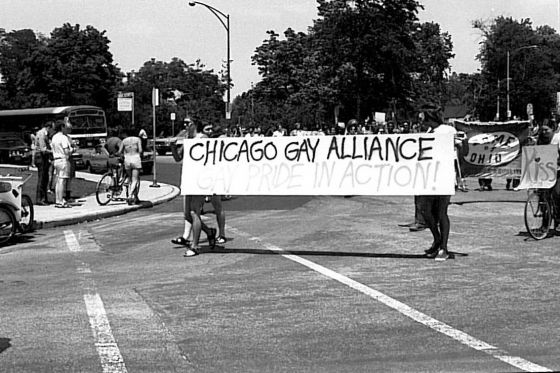I was staring the other day while on the internet at images of 1920s living rooms and kitchens, because I realized how many places I’ve lived in (including my current dwelling) were built in that time period. For example, builders were churning out rows and rows of the traditional Chicago brick bungalow, and, as my grandmother (born in 1900, and she would know) had told me, this was really one of the first homes with consistently “modern” conveniences such as an indoor, private bathroom with a tub and shower, a kitchen with a sink and room for an icebox/refrigerator, and up-to-date electrical wiring and outlets for the period.

Thus, I posed this question on my personal Twitter: what if you woke up and it was 1920 or thereabouts (which, next year, will be 100 years ago!); where would you be, who would you be, what would you do?
Most of the responses were frankly, more glamorous and noble, than mine, such as, according to one classical music specialist being in Vienna and/or Paris and hanging around with such luminaries as “Webern, the Mahlers, Picasso, Woolf, Freud, and Jung.” Another person chose Paris, identifying himself with The Lost Generation, “buying tickets for Koussevitzky’s concerts, Prokofiev’s recitals, and Diaghelev’s ballets.” Another person claimed she would be involved in the women’s suffrage movement.
I concocted a 1920s LGBTQ fantasy. I wonder if I should just write it as a kind of 1920s “Tales of the City,” set in Chicago.

I imagined myself as a “dapper young” homosexual, working as a clerk in a library, maybe the Chicago Public Library or even the more esteemed Newberry Library. I would also be trying at the same time to go to school in some humanities-related field. I would be riding the streetcar downtown to work and school from the single room occupancy hotel for men where I would be living.

At the hotel, I meet another dapper guy who is studying philosophy, and we both plan to go to the infinitely more exciting New York and experience the much more sophisticated bohemian scene there (we are both too poor to go to Paris, alas). But a muscular stevedore with a big moustache moves down the hall and distracts me, especially after I accidentally on purpose get a glimpse of his massive uncut cock as he is leaving the shared toilet area in the hotel.

By this point, one of my Twitter buddies (who is married, of course, grr) said he was getting turned on by this whole narrative, that he would be thinking about it all day, and that he wants to hang out with me, and that, when I mentioned the stevedore, he was thinking, “I want to binge this on Netflix.” (I now know I may have missed my calling.)
Continuing the literally steamy narrative, the dapper philosophy student goes to the Turkish bath. He lies to me that he “did something naughty there.” But I pretty much realize the story is a fabrication, because during that time period, one would be arrested and jailed for sodomy.
As a result, I break up with him (he goes back to live with his Irish parents on the South Side), and visit my eccentric grandma who lives in a two-story frame house in the Division/Milwaukee area, at that time a Polish area. She works full time at the famous Wieboldt’s department store in the area. She is my only family left, because both my parents had died in the 1918 influenza pandemic.

Next door to Grandma, two German ladies live together in a “Boston marriage” (two single women, usually wealthy, living together, not necessarily lesbian, but … ). Scandalously, one of them was seen outside smoking.
While I am staying next door at my grandma’s house, enjoying her front porch on steamy summer nights, the spinster aunt of one of the lesbians next door (Aunt Heddy owns the house) is found stabbed to death with an ice pick. One of the ladies blames the African American ice man, who is convicted on circumstantial evidence (revealing the extreme bigotry of the period, right after the infamous 1919 Chicago Race Riots), but I suspect something else may be afoot.

All the while, the stevedore and I are enjoying casual kinky sex (Mr. Muscles of course is the dominant one, of course, but he does like me to give him a spanking once in a while with my belt), but his parents are setting him up to get married to an extremely boring childhood neighbor girl who works at Western Electric in Cicero.
The stevedore and I now decide to do some of our own investigating to find out who really killed Aunt Heddy. Was it her cigarette-smoking niece who was going to inherit the house she was living in with her friend?
That’s as far as I got. I think it’s got potential, both as a novel and/or as a screenplay, and also because of its rich allusions to the specific urban culture of the period.
In the meantime, maybe I’ll just write one of the steamy gay sex scenes and share it on the blog.
















 Join our Email List
Join our Email List Like Us on Facebook
Like Us on Facebook Instagram
Instagram Youtube
Youtube Follow Us on Twitter
Follow Us on Twitter Follow us on Pinterest
Follow us on Pinterest